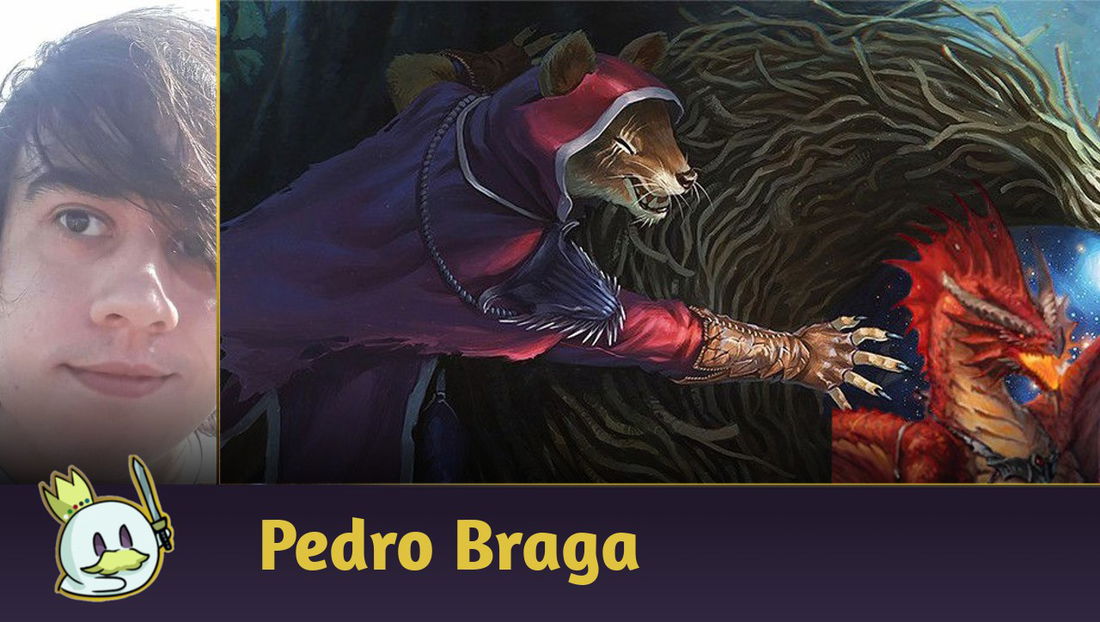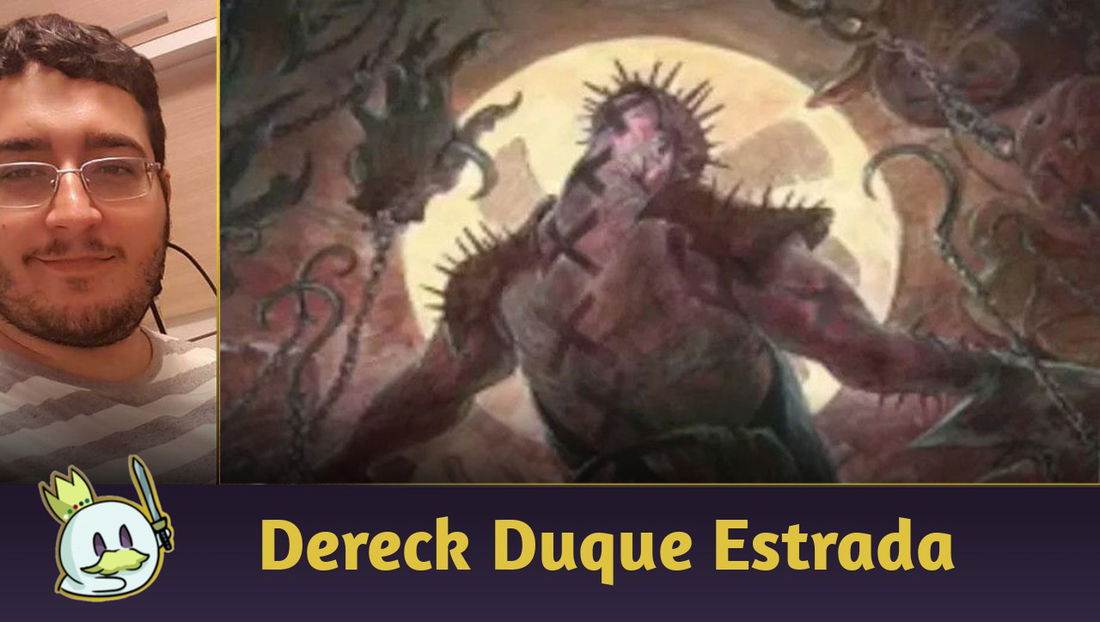Hey there, everyone!
2024 still has a lot of new sets to come (ugh!), so let's stay updated and prepared for this weekend's prerelease events, shall we?
Today we're going to talk about the mechanics of the most recent set: DUSKMOURN!
Let's review each Duskmourn Mechanic!
ROOMS

We'll begin by talking about Duskmourn's great innovation, a new type of enchantment: “Rooms”! Duskmourn is set in a house straight out of horror films, so exploration and hidden “rooms” are part of its setting.
Ad
“Rooms” are the first occurrence in the history of the game of Split Cards on permanents, and not instants/spells. Basically, the “Room” cards have two options that you can cast, and when you announce one of them, only this one will be on the stack and, later, on the field when the spell resolves.
However, once on the field, you can also pay the cost for the other side of the card, and with that you “unlock” the other room! That means you add the effects of the other side to your enchantment.
Let's clarify some points:
- Rooms in zones that are not the stack or the battlefield will count both sides, since they are a single card. In other words, if you do a cascade or discover for 3, for example, you won't “stop” if you find a Bottomless Pool, because it is not considered “alone” - you add it with Locker Room and see a total mana value of 6;
- On the stack and field, however, a Room is considered to have only the side that was cast. So, for example, if you have Bottomless Pool on the field, your opponent CAN use an Abrupt Decay to destroy it;
- While on the field, the controller can, under the same conditions as a sorcery spell (that is, on the controller's main phase and with an empty stack), pay the mana cost of the “locked” side of the Room and thus “unlock” the complete card . This is a special action and does not use the stack - so, thinking about our previous example, an opponent can't use an Abrupt Decay to destroy it “in response” to you unlocking "Locker Room".
- Unlocking the other side of the Room means that your enchantment now gains the characteristics of both sides - it is important to note, you are NOT controlling two enchantments/permanents, it's always ONE card. The Room you have on the table has the characteristics and mana value of its unlocked sides, so it is even possible for you to have a one-color Room and, after unlocking the second side, now have a two-colored Room!;
- The interaction with cards that copy a spell on the stack is that they will copy exactly what Room is being cast at the time, but they will also be exactly like the original Room, so they can have their other side unlocked as well;
- The interaction with cards that clone Rooms on the field is a little different - they’ll enter with both doors locked, irregardless of the original Room’s status;
- At last, if a spell or effect puts a Room on the field without casting it, the Room enters with both doors LOCKED (it will be an enchantment with no mana value or effects). The controller can pay the costs of either doors to unlock them;
MANIFEST DREAD

Manifest Dread is, as the name suggests, a variation of the “Manifest” mechanic from the Fate Reforged set.
The original “Manifest” mechanic meant simply taking the top card of the deck and putting it on the battlefield face down as a 2/2 creature with no abilities. If the card is a creature, you may pay its cost and turn it face up.
“Manifest Dread”, the new ability, does almost the same thing - the only difference is that, instead of just taking the top card of the deck, you look at the TWO top cards, CHOOSE which one will enter the field face down as a 2/2 creature, and the other goes to the graveyard.
Ad
Now, some reminders:
- Turning the 2/2 creature face up by paying its cost is a special action that does not use the stack, and can also be done instant-speed;
- If the card is double-faced (for example, a Delver of Secrets), it continues to enter as a 2/2 with no abilities, and you will consider the cost and side of the “main” face of the card (in our example, the Delver of Secrets itself, 1/1 for 
- If the card has its own ability that allows it to be turned face-up, such as Disguise or Morph, you can also pay this cost to turn it face-up;
- Turning a creature face up does NOT make it enter (it was already on the field, just in another form). So, turning it over will not activate any “when it enters the battlefield” or similar effects;
EERIE

Eerie, similar to Manifest Dread, is also a variation of a mechanic, this time “Constellation”, originally from Journey into Nyx.
The original mechanic was an effect that occurred every time an enchantment entered under your control. “Eerie” just adds the “unlock a Room” condition to actions that can trigger this effect.
Remember, if a card with Eerie enters the field AT THE SAME TIME as an enchantment (for example, a Collected Company putting a card with Eerie and an enchantment creature), the Eerie ability WILL activate!
IMPENDING

“Impending” is a variation of the “Suspend” mechanic from Time Spiral (damn, WotC design was really onto "variation of mechanics" for Duskmourn!).
When you “suspend” a spell, you exile it with a number of time counters indicated on the ability. Each turn, at the beginning of your uokeep, you remove a counter, and when you remove the last one, the spell is finally cast.
“Impending” is similar, but it's important to highlight the differences: you are actually CASTING the spell, albeit for an alternative cost, and once resolved, the permanent already enters the battlefield, only it's just an enchantment (it's not a creature yet). You will place a number of time counters indicated in “Impending”, and remove one at the beginning of your END STEP (be careful not to confuse it with upkeep, as in Suspend!). When you remove the last one, you now have an enchantment creature.
This ability is specific to the "Overlords" cycle in Duskmourn, 5 mythics (one of each color), so it won't be that frequent in pre-releases - but it's always good to be prepared!
SURVIVAL

“Survival” is a new ability keyword that indicates an ability that triggers if you meet the condition - the creature with “Survival” must be tapped when its controllers' second Main Phase begins.
This choice of words is important, because it specifically states “your SECOND main phase”, so any effects that add more main phases to a turn do not interact with the ability.
It is also important to remember that the creature must already be tapped when the second main phase begins - if AFTER the second main starts you do something that taps the creature, Survival will NOT trigger!
Ad
And finally, something interesting - “Survival” will check if the creature is STILL tapped when the ability resolves. So, if you have a way to untap an opponent's creature in response to a Survival trigger, you will effectively “counter” the ability! Removing the creature, however, will not affect it, because when the trigger resolves it will “remember” the state of the creature before leaving, and if it was tapped, then Survival will resolve normally.
Conclusion
Well everyone, these are the new mechanics in DUSKMOURN!
I hope you all have fun and enjoy your prerelease events!!!
See you next time!








— Comentários0
Seja o primeiro a comentar